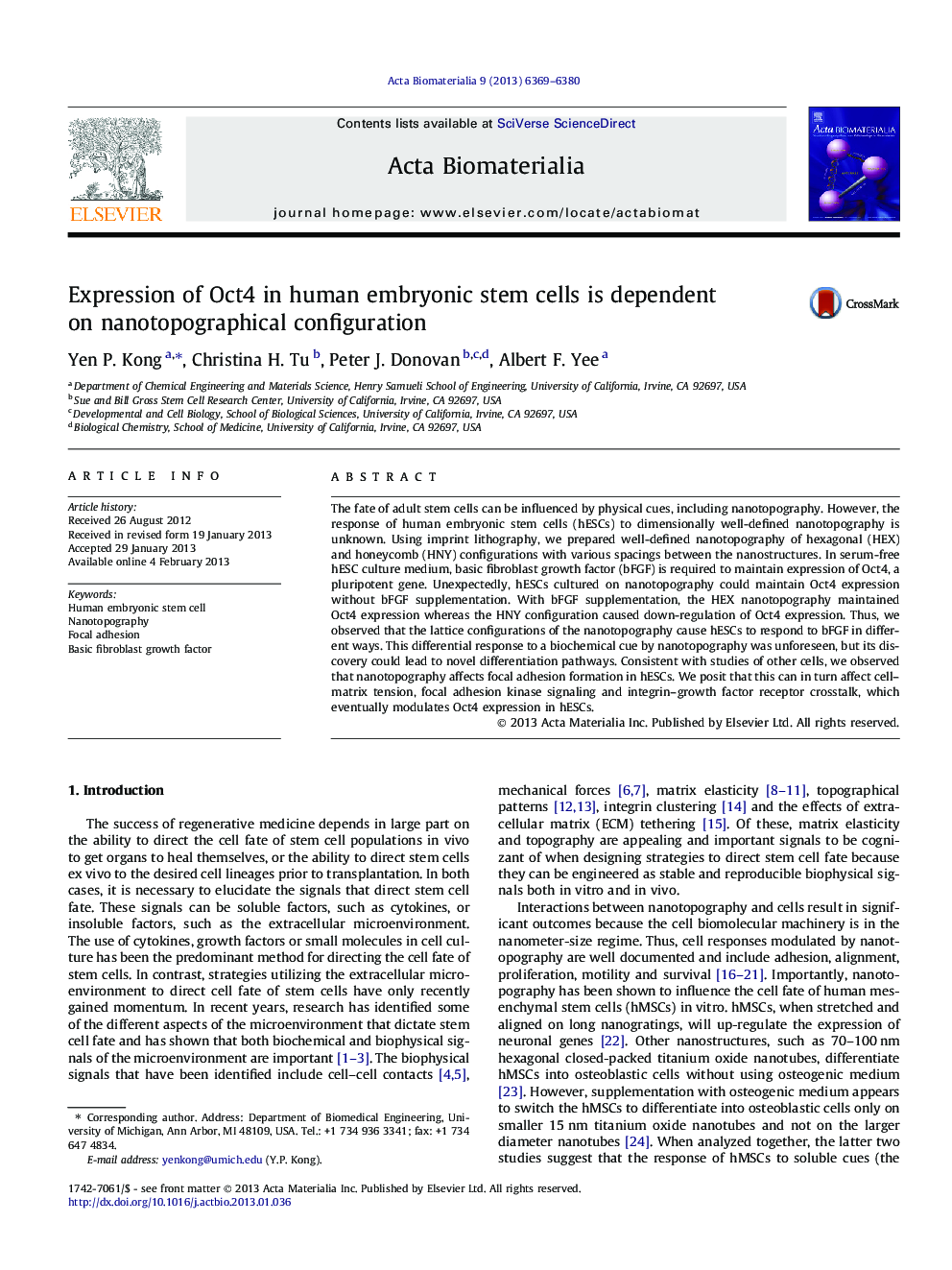| Article ID | Journal | Published Year | Pages | File Type |
|---|---|---|---|---|
| 10159894 | Acta Biomaterialia | 2013 | 12 Pages |
Abstract
The fate of adult stem cells can be influenced by physical cues, including nanotopography. However, the response of human embryonic stem cells (hESCs) to dimensionally well-defined nanotopography is unknown. Using imprint lithography, we prepared well-defined nanotopography of hexagonal (HEX) and honeycomb (HNY) configurations with various spacings between the nanostructures. In serum-free hESC culture medium, basic fibroblast growth factor (bFGF) is required to maintain expression of Oct4, a pluripotent gene. Unexpectedly, hESCs cultured on nanotopography could maintain Oct4 expression without bFGF supplementation. With bFGF supplementation, the HEX nanotopography maintained Oct4 expression whereas the HNY configuration caused down-regulation of Oct4 expression. Thus, we observed that the lattice configurations of the nanotopography cause hESCs to respond to bFGF in different ways. This differential response to a biochemical cue by nanotopography was unforeseen, but its discovery could lead to novel differentiation pathways. Consistent with studies of other cells, we observed that nanotopography affects focal adhesion formation in hESCs. We posit that this can in turn affect cell-matrix tension, focal adhesion kinase signaling and integrin-growth factor receptor crosstalk, which eventually modulates Oct4 expression in hESCs.
Related Topics
Physical Sciences and Engineering
Chemical Engineering
Bioengineering
Authors
Yen P. Kong, Christina H. Tu, Peter J. Donovan, Albert F. Yee,
